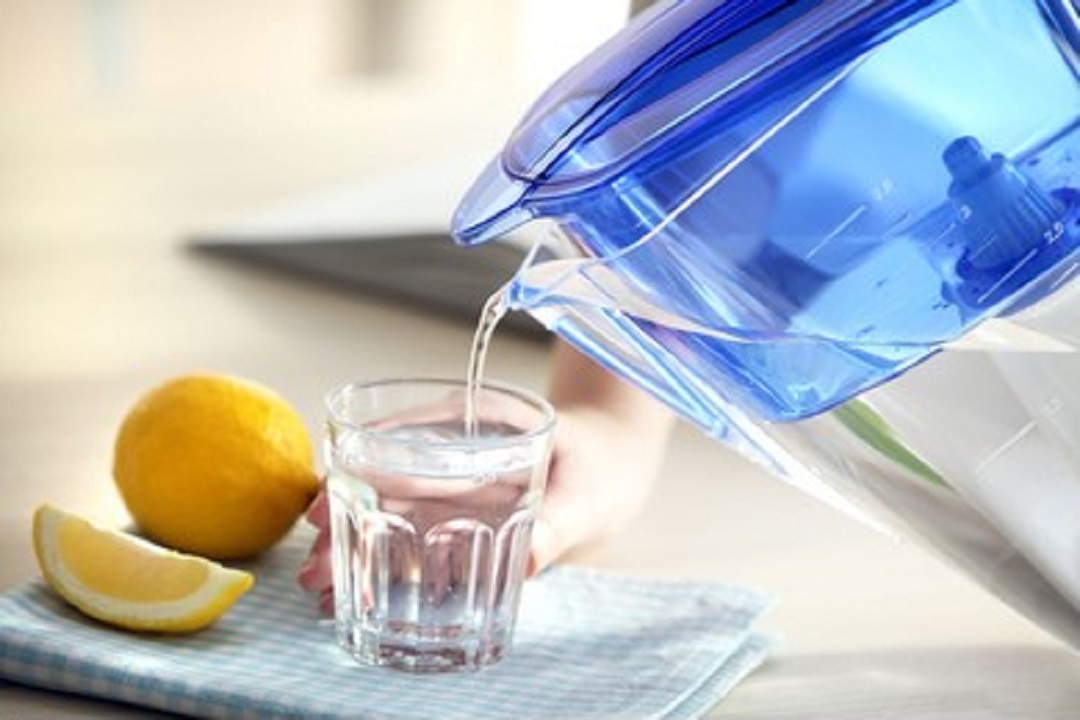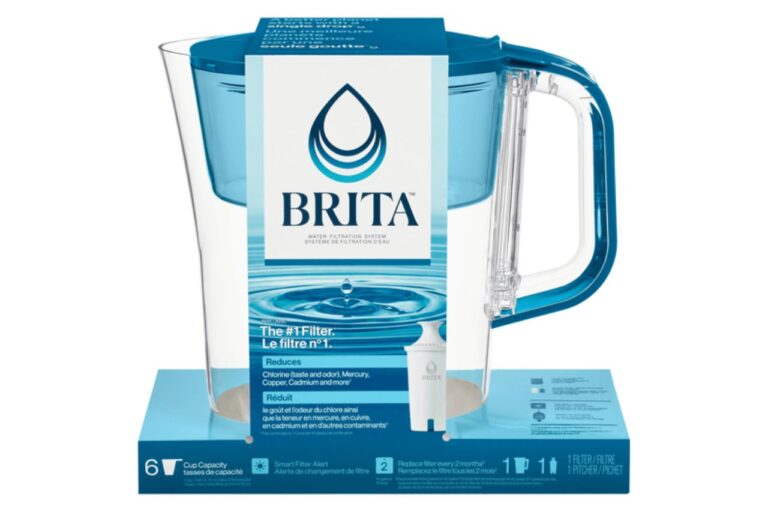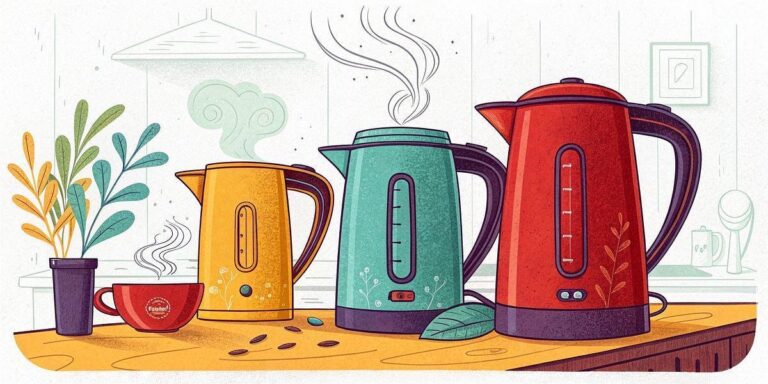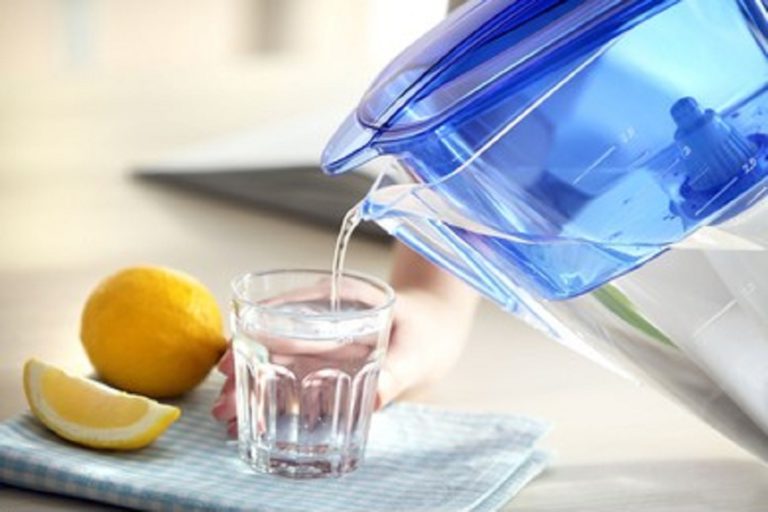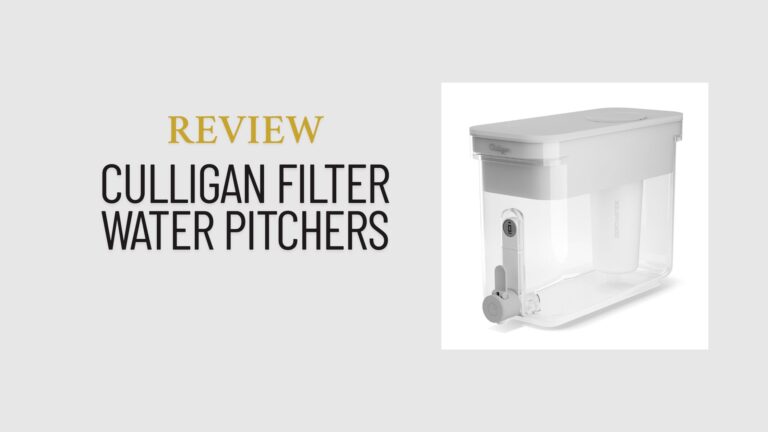Beginner’s Guide to Water Filter Pitchers
Clean, great-tasting water is essential for your health and wellbeing. If you’ve been considering alternatives to bottled water or are concerned about what might be in your tap water, a water filter pitcher could be the perfect solution. These affordable, easy-to-use devices can transform ordinary tap water into cleaner, better-tasting drinking water without the need for complex installation or expensive systems. This comprehensive guide will walk you through everything you need to know about choosing and using a water filter pitcher, helping you make an informed decision for your home.
What Are Water Filter Pitchers?
Water filter pitchers are simple devices designed to remove contaminants from your tap water. They typically consist of three main components: a pitcher or dispenser container, an upper reservoir for unfiltered water, and a replaceable filter cartridge. When you fill the upper reservoir with tap water, gravity pulls the water through the filter into the main pitcher below, removing various impurities along the way.
These pitchers require no installation, no connection to your plumbing, and can be stored in your refrigerator for cold, filtered water whenever you need it. They’re portable, affordable, and provide an immediate solution for improving your drinking water quality without the commitment of a permanent filtration system.
How Water Filter Pitchers Work
Most water filter pitchers use a combination of filtration technologies to clean your water. Understanding these mechanisms helps you choose the right pitcher for your specific needs:
Common Filtration Methods
- Activated Carbon: The most common filtration material, activated carbon works through adsorption, attracting and trapping contaminants like chlorine, volatile organic compounds (VOCs), and substances that affect taste and odor.
- Ion Exchange Resin: These tiny beads attract and trap heavy metals like lead, copper, and mercury by exchanging them with harmless ions.
- Mechanical Filtration: Some filters include mesh screens or porous materials that physically block larger particles like sediment, rust, and some microplastics.
What Contaminants Do Water Filter Pitchers Remove?
While capabilities vary by brand and model, most water filter pitchers can reduce or remove:
Common Removals
- Chlorine (taste and odor)
- Sediment and particulates
- Some heavy metals (lead, mercury)
- Copper
- Zinc
Advanced Filters May Remove
- PFOA/PFOS (“forever chemicals”)
- Pharmaceuticals
- Pesticides
- Industrial chemicals
- Microplastics
Typically Not Removed
- Bacteria and viruses
- Dissolved minerals (unless TDS filter)
- Fluoride (most models)
- Nitrates
- Arsenic
Important: Most standard water filter pitchers are not designed to make biologically unsafe water safe to drink. If you’re under a boil water advisory, have well water concerns, or are dealing with bacterial contamination, a water filter pitcher is not sufficient protection.
Benefits of Using a Water Filter Pitcher

Advantages of Water Filter Pitchers
- Improved Taste and Odor: Removes chlorine and other substances that can give tap water an unpleasant taste or smell.
- Cost Savings: Much more economical than bottled water. The average household can save $300-$900 per year by switching from bottled water to a filter pitcher.
- Environmental Impact: Significantly reduces plastic waste from disposable water bottles.
- Convenience: No installation required, portable, and fits in most refrigerators.
- Health Benefits: Reduces exposure to potential contaminants like lead, mercury, and some pharmaceuticals (depending on the filter).
- Accessibility: Affordable entry point to water filtration compared to installed systems.
Limitations to Consider
- Limited Capacity: Need regular refilling, especially for larger households.
- Ongoing Filter Costs: Replacement filters are required every 1-3 months, depending on model and usage.
- Filtration Speed: Can take several minutes to filter water, unlike instant tap systems.
- Limited Contaminant Removal: Not as comprehensive as under-sink or whole-house systems.
- Maintenance Required: Regular cleaning and filter changes needed for optimal performance.
Ready to Enjoy Cleaner, Better-Tasting Water?
Start saving money and reducing plastic waste with a high-quality water filter pitcher that removes contaminants and improves taste.
Water Filter Pitcher Buying Guide: Key Features to Consider
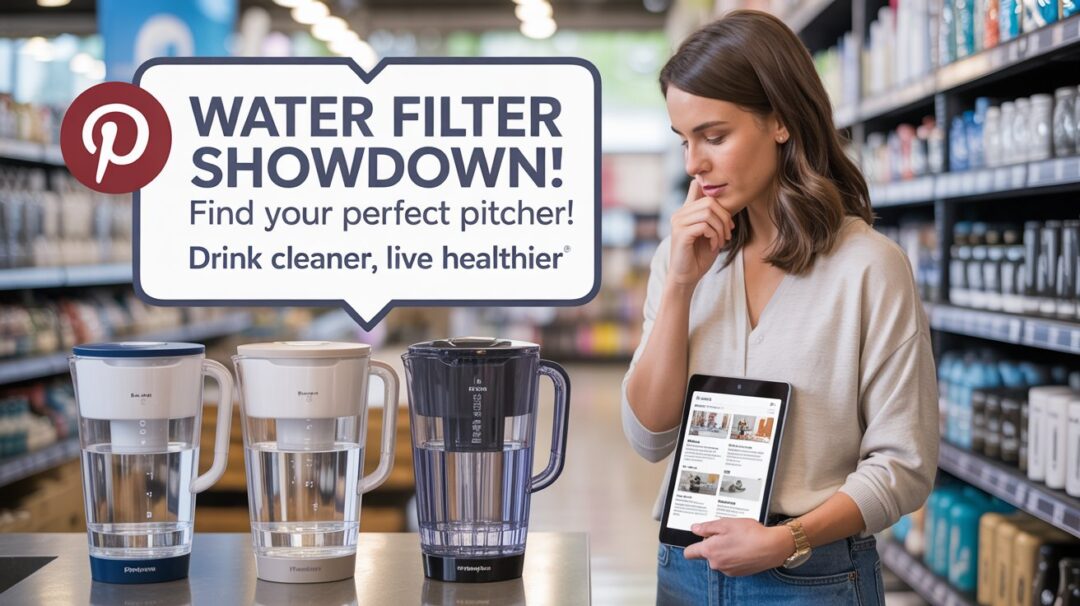
With numerous water filter pitchers on the market, choosing the right one can feel overwhelming. Here are the key factors to consider when making your selection:
Filter Certification and Standards
Look for pitchers with filters certified by recognized organizations to ensure they actually remove what they claim to remove:
- NSF/ANSI Standard 42: Certifies reduction of chlorine, taste, and odor
- NSF/ANSI Standard 53: Certifies reduction of contaminants with health effects (lead, mercury, VOCs, etc.)
- NSF/ANSI Standard 401: Certifies reduction of emerging contaminants (pharmaceuticals, PFOA/PFOS)
- Water Quality Association (WQA) Gold Seal: Another trusted certification program
Be wary of vague claims like “tested to NSF standards” without actual certification. For maximum confidence, look for filters with official NSF or WQA certification marks.
Filter Lifespan and Replacement Cost
Filter lifespan varies significantly between brands and models:
- Standard filters: Typically last 40 gallons or about 2 months
- Long-life filters: Can last 120+ gallons or up to 6 months
When comparing prices, calculate the annual cost of replacement filters, not just the initial pitcher price. A pitcher with a higher upfront cost but longer-lasting filters might be more economical in the long run.
Pitcher Capacity and Size
Consider your household size and water consumption when choosing capacity:
- Small pitchers (5-7 cups): Good for individuals or couples, fit easily in crowded refrigerators
- Medium pitchers (8-10 cups): Suitable for small families, balance between size and capacity
- Large dispensers (12-30+ cups): Ideal for larger families or heavy water drinkers, require more fridge space
Filtration Speed
Filtration speed can vary dramatically between models. Generally, pitchers that filter more contaminants work more slowly. Consider how quickly you need filtered water and how patient you are with waiting for refills.
Material and Construction
- Plastic: Most common, lightweight, affordable, typically BPA-free
- Glass: Heavier but doesn’t absorb odors or stains, more eco-friendly
- Stainless Steel: Durable, doesn’t absorb odors, not transparent
Also consider the design of the lid (secure vs. flip-top), handle comfort, and whether the pitcher is dishwasher safe for easier cleaning.
Filter Indicator
Many pitchers include a feature to remind you when it’s time to change the filter:
- Timer indicators: Simple countdown from when you install the filter
- Electronic indicators: More accurate, may measure actual water volume filtered
- Smart indicators: Some newer models connect to apps for replacement reminders
Comparison of Popular Water Filter Pitcher Models
| Brand & Model | Capacity | Filter Life | Key Contaminants Removed | Special Features | Best For |
| Brita Everyday with Elite Filter | 10 cups | 6 months / 120 gallons | Chlorine, lead, mercury, cadmium, benzene, asbestos, PFOA/PFOS | Filter indicator, BPA-free | All-around use, families |
| ZeroWater 12-Cup Pitcher | 12 cups | 2-3 months / 40 gallons | Virtually all total dissolved solids (TDS), lead, chromium, PFOA/PFOS | 5-stage filtration, TDS meter included | Maximum contaminant removal |
| PUR Plus 11-Cup Pitcher | 11 cups | 2 months / 40 gallons | Chlorine, lead, mercury, certain pesticides | LED filter indicator, grip handle | Lead reduction, easy pouring |
| LifeStraw Home 7-Cup | 7 cups | 2 months (carbon) / 1 year (membrane) | Bacteria, parasites, microplastics, lead, mercury, chlorine | Protects against microbiological contaminants | Microbiological protection |
| Aquagear Water Filter Pitcher | 8 cups | 4 months / 150 gallons | Lead, chlorine, fluoride, chromium-6, chloramines | Filter recycling program, lifetime guarantee | Fluoride reduction, eco-conscious users |
Find Your Perfect Water Filter Pitcher
Compare top-rated models and read verified customer reviews to find the water filter pitcher that best meets your needs.
Maintenance and Care Tips
Proper maintenance ensures your water filter pitcher performs optimally and lasts longer. Follow these essential care tips:
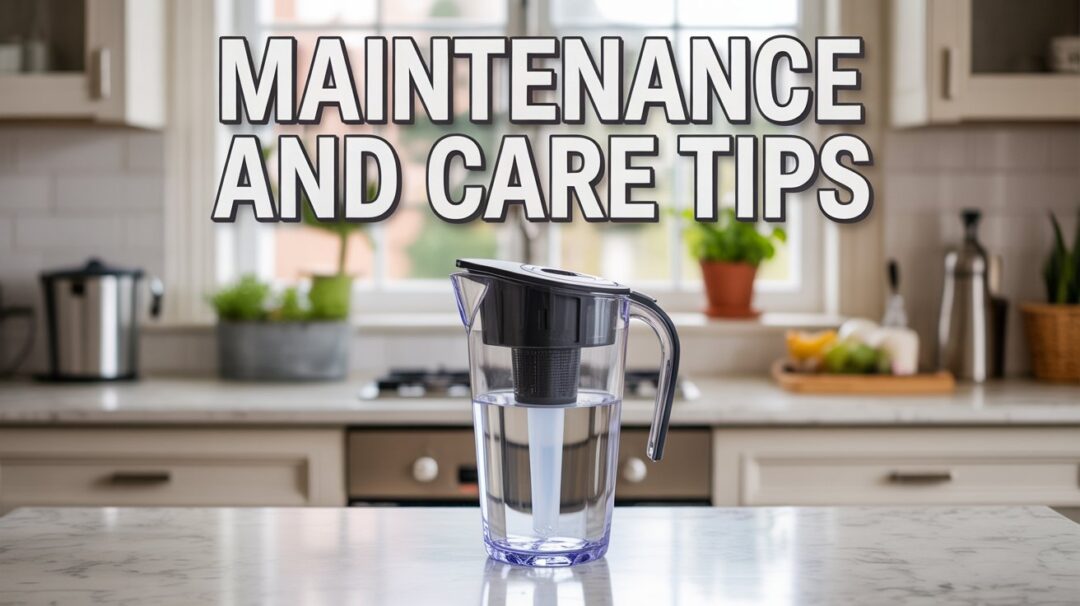
Filter Replacement
- Follow manufacturer guidelines for when to replace your filter (typically every 2-6 months)
- Soak new filters as directed before first use to activate the filtration media
- Mark your calendar or set phone reminders for filter changes if your pitcher doesn’t have an indicator
- Consider water quality – harder water or water with more sediment may require more frequent filter changes
Cleaning Your Pitcher
Regular cleaning prevents buildup of minerals, algae, and bacteria:
- Wash weekly with mild dish soap and warm water
- Disassemble completely, including lid and reservoir
- Avoid abrasive cleaners that can scratch the plastic
- For deeper cleaning, use a solution of white vinegar and water (1:1) monthly
- Air dry thoroughly before reassembling
Important: Never wash the filter cartridge itself with soap. If the filter needs rinsing, use only cold water. Soap can damage the filtration media and contaminate your drinking water.
Storage Tips
- Keep your pitcher refrigerated for best taste and to prevent bacterial growth
- Store away from direct sunlight to prevent algae growth
- If not using for extended periods, remove and properly store the filter (follow manufacturer instructions)
- For vacation absences, empty, clean, and dry the pitcher completely before leaving
Troubleshooting Common Issues
| Problem | Possible Cause | Solution |
| Slow filtration | Clogged filter, air bubbles | Replace filter if old; gently tap to release air bubbles |
| Black specks in water | Carbon particles from new filter | Normal with some filters; rinse filter thoroughly before first use |
| Unpleasant taste | Old filter, dirty pitcher | Replace filter, clean pitcher thoroughly |
| Leaking | Improper assembly, cracked components | Check all parts are properly seated; inspect for damage |
| Floating filter | Air trapped in filter | Submerge filter in water and tap gently to release air |
Frequently Asked Questions
How often should I replace my water filter?
Replacement frequency varies by brand and model. Standard filters typically last about 40 gallons or 2 months, while premium “long-life” filters can last up to 120 gallons or 6 months. Follow the manufacturer’s recommendations, and replace sooner if you notice a decrease in water flow or taste quality. Households with harder water or higher sediment levels may need more frequent replacements.
Do water filter pitchers remove fluoride?
Most standard water filter pitchers do NOT remove fluoride. If fluoride removal is important to you, look for specialized filters specifically certified for fluoride reduction. Brands like Clearly Filtered and Aquagear claim to reduce fluoride, but these claims should be verified through NSF/ANSI certification.
Can water filter pitchers remove bacteria and viruses?
Most standard water filter pitchers are NOT designed to remove bacteria, viruses, or other microbiological contaminants. A few exceptions exist, such as the LifeStraw Home pitcher, which uses membrane filtration to remove bacteria and parasites. If you’re concerned about microbiological contamination, look for filters specifically certified for this purpose or consider other water treatment methods.
Are water filter pitchers better than bottled water?
Water filter pitchers offer several advantages over bottled water: they’re more cost-effective (saving hundreds of dollars annually), more environmentally friendly (reducing plastic waste), and provide freshly filtered water on demand. Quality filtered water is comparable to or better than many bottled waters in taste tests. However, bottled water may be more convenient for travel or emergency situations.
How do I know what’s in my tap water?
To learn about your tap water quality, you can: 1) Request a Consumer Confidence Report (CCR) from your local water utility, 2) Use an at-home water test kit, 3) Send a sample to a certified laboratory for comprehensive testing, or 4) Check the Environmental Working Group’s (EWG) Tap Water Database online. Understanding your specific water quality helps you choose a filter that addresses your particular contaminants of concern.
Can I put other liquids besides water in my filter pitcher?
No. Water filter pitchers are designed specifically for filtering tap water only. Putting other beverages (juice, tea, coffee, etc.) through the filter can damage the filtration media, clog the filter prematurely, and potentially introduce bacteria. It may also void your warranty.
Environmental Impact and Sustainability

Choosing a water filter pitcher over bottled water significantly reduces your environmental footprint:
Plastic Waste Reduction
- The average American uses 167 disposable water bottles annually, but recycles only 38
- A single water filter pitcher can replace thousands of plastic bottles per year
- Plastic water bottles can take 450+ years to decompose in landfills
Carbon Footprint Considerations
While filter pitchers do create some waste through replacement filters, their overall environmental impact is substantially lower than bottled water:
- Bottled water production requires petroleum for plastic, fuel for transportation, and energy for refrigeration
- The carbon footprint of bottled water is up to 2,000 times higher than tap water
- Some filter brands now offer recycling programs for used cartridges
Sustainable Options
If environmental impact is a priority, consider these more sustainable choices:
- Glass or stainless steel pitchers instead of plastic
- Brands with filter recycling programs (Brita, Pur, and others partner with TerraCycle)
- Longer-lasting filters that require fewer replacements
- Filters with biodegradable components
“By switching from bottled water to a filter pitcher, a family of four can prevent approximately 3,000 plastic bottles from entering the waste stream annually while saving over $600 per year.”
— Environmental Protection Agency estimate
Conclusion: Making the Right Choice for Your Home
Water filter pitchers offer an accessible, affordable way to improve your drinking water quality without complex installation or major investment. By understanding the basics of how they work, what contaminants they remove, and which features matter most for your household, you can make an informed decision that benefits your health, wallet, and the environment.
Remember to consider your specific water quality concerns, household size, and budget when selecting a pitcher. Regular maintenance and timely filter replacements will ensure your water stays clean and tastes great for years to come.
Whether you’re concerned about contaminants, looking to improve taste, or wanting to reduce plastic waste from bottled water, a quality water filter pitcher is a simple step toward healthier, more sustainable hydration for you and your family.
Start Enjoying Cleaner, Better-Tasting Water Today
Browse top-rated water filter pitchers and find the perfect model for your home’s needs.

